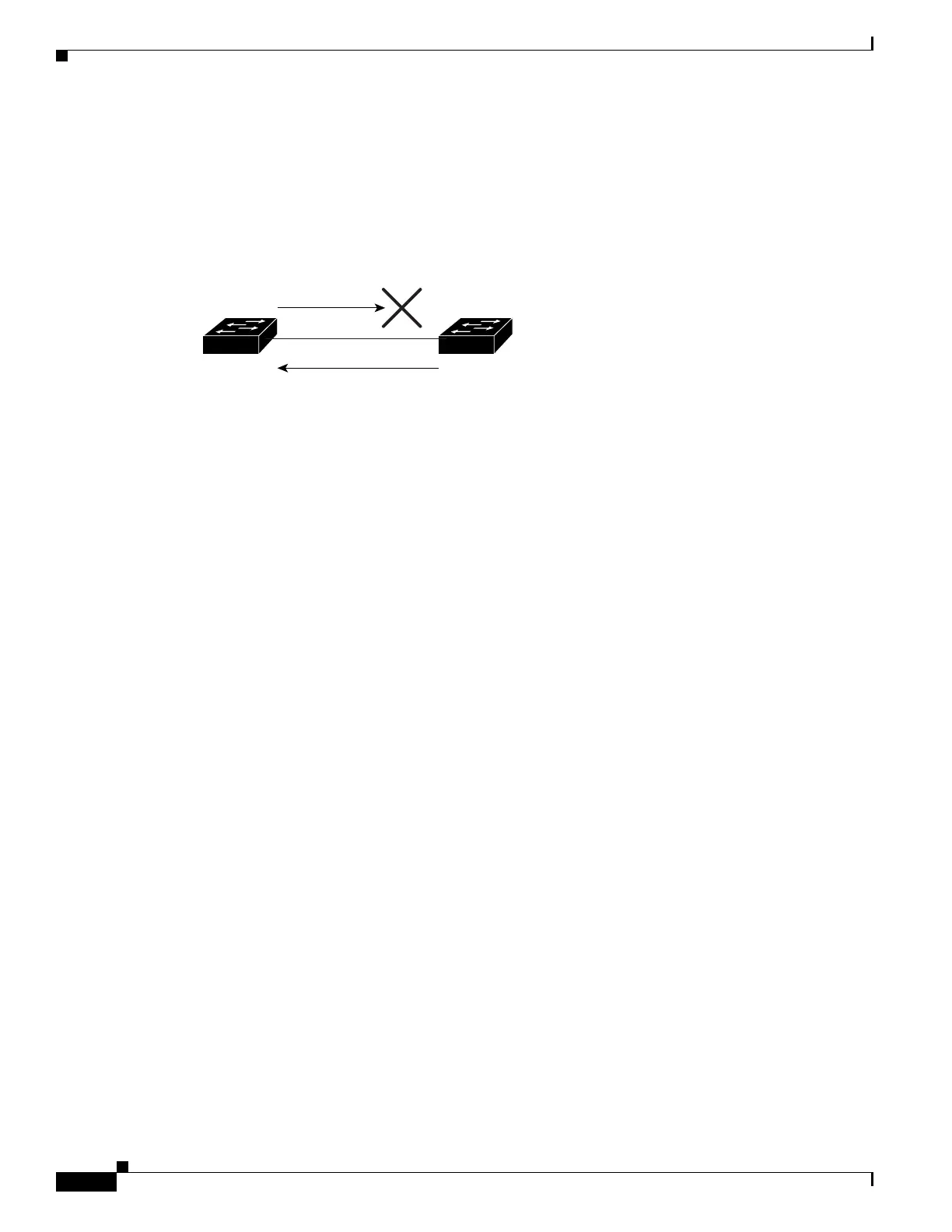19-8
Catalyst 3750-E and 3560-E Switch Software Configuration Guide
OL-9775-08
Chapter 19 Configuring MSTP
Understanding MSTP
Figure 19-3 illustrates a unidirectional link failure that typically creates a bridging loop. Switch A is the
root switch, and its BPDUs are lost on the link leading to switch B. RSTP and MST BPDUs include the
ro
le and state of the sending port. With this information, switch A can detect that switch B does not react
to the superior BPDUs it sends and that switch B is the designated, not root switch. As a result, switch
A blocks (or keeps blocking) its port, thus preventing the bridging loop.
Figure 19-3 Detecting Unidirectional Link Failure
MSTP and Switch Stacks
A switch stack appears as a single spanning-tree node to the rest of the network, and all stack members
use the same switch ID for a given spanning tree. The switch ID is derived from the MAC address of the
stack master.
If a switch that does not support MSTP is added to a switch stack that does support MSTP or the reverse,
th
e switch is put into a version mismatch state. If possible, the switch is automatically upgraded or
downgraded to the same version of software that is running on the switch stack.
When a new switch joins the stack, it sets its switch ID to the stack master switch ID. If the newly added
s
witch has the lowest ID and if the root path cost is the same among all stack members, the newly added
switch becomes the stack root. A topology change occurs if the newly added switch contains a better
root port for the switch stack or a better designated port for the LAN connected to the stack. The newly
added switch causes a topology change in the network if another switch connected to the newly added
switch changes its root port or designated ports.
When a stack member leaves the stack, spanning-tree reconvergence occurs within the stack (and
poss
ibly outside the stack). The remaining stack member with the lowest stack port ID becomes the stack
root.
If the stack master fails or leaves the stack, the stack members elect a new stack master, and all stack
me
mbers change their switch IDs of the spanning trees to the new master switch ID.
For more information about switch stacks, see Ch
apter 5, “Managing Switch Stacks.”
Interoperability with IEEE 802.1D STP
A switch running MSTP supports a built-in protocol migration mechanism that enables it to interoperate
with legacy IEEE 802.1D switches. If this switch receives a legacy IEEE 802.1D configuration BPDU
(a BPDU with the protocol version set to 0), it sends only IEEE 802.1D BPDUs on that port. An MSTP
switch also can detect that a port is at the boundary of a region when it receives a legacy BPDU, an MSTP
BPDU (Version 3) associated with a different region, or an RSTP BPDU (Version 2).
However, the switch does not automatically revert to the MSTP mode if it no longer receives
IE
EE 802.1D BPDUs because it cannot detect whether the legacy switch has been removed from the link
u
nless the legacy switch is the designated switch. A switch might also continue to assign a boundary role
Inferior BPDU,
Designated + Learning bit set
Superior
BPDU
Switch
A
Switch
B
92722

